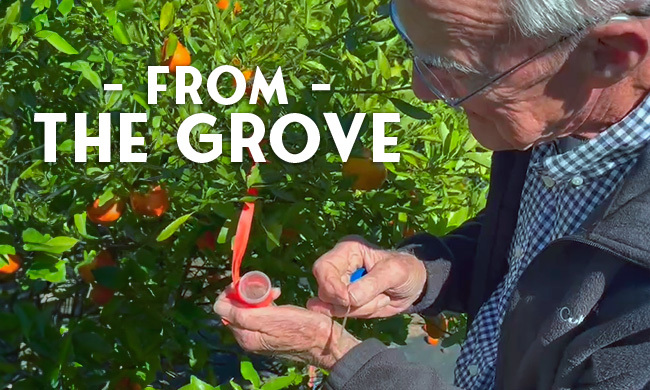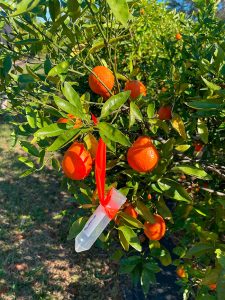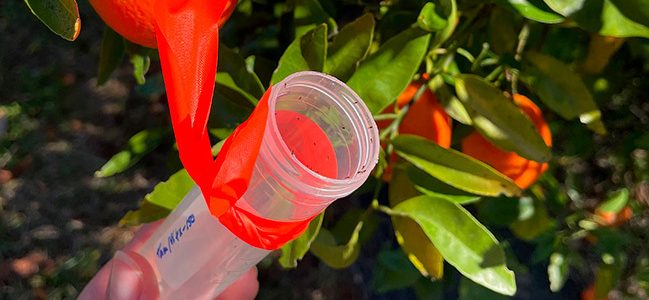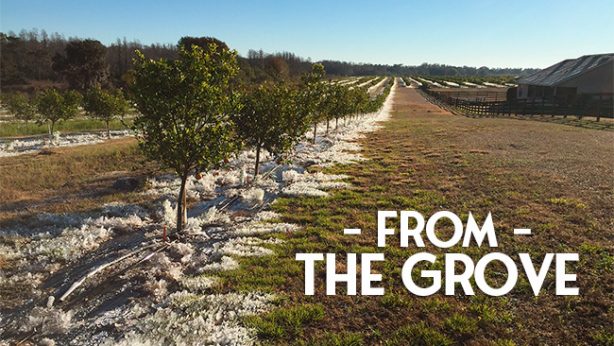From the Grove: Grove Guardians

The Tiny Bug Hero Taking on Citrus Greening Disease
While the Citrus Greening epidemic is responsible for devastating much of the Florida citrus industry, our research team continues working hard to find a solution. Currently, there is no cure for the disease, but Benny and Ben McLean III (Uncle Matt’s dad and brother) have identified several key practices that show promise in managing the spread of Greening. One such tactic is the controlled release of Tamarixia wasps in groves.
To recap, Citrus Greening is the result of the invasion of the Asian Citrus Psyllid, a small insect that originated in China. In the colder months of the year, psyllid populations are low. As temperatures warm and the trees begin to break dormancy, the invasive insect count explodes as they start feeding on the sap found in freshly sprouted leaves of citrus trees and lay their eggs. Managing this pest early is crucial for the health of the trees throughout the year.
This ‘bad’ bug carries a harmful bacteria in its stomach, and when it feeds, it infects the trees, causing Greening. The trees don’t recognize this as a pathogen, so their immune systems don’t kick in to fight off the infection. The bacteria make it difficult for the tree to absorb crucial nutrients from the soil which causes the fruit to green and drop off early. Moreover, the infected tree will eventually die.
 Enter: good bugs! Tamarixia wasp eggs are what actually helps limit the spread of psyllid. After a psyllid feeds, the females lay their eggs on the leaves. This first stage of the egg is called a nymph. They resemble small fish scales laid in a line across a leaf. When the wasps are released, they too lay their eggs on the leaves. When the wasp eggs hatch, they eat the nymphs before they have a chance to grow into a mature psyllid that spreads Greening.
Enter: good bugs! Tamarixia wasp eggs are what actually helps limit the spread of psyllid. After a psyllid feeds, the females lay their eggs on the leaves. This first stage of the egg is called a nymph. They resemble small fish scales laid in a line across a leaf. When the wasps are released, they too lay their eggs on the leaves. When the wasp eggs hatch, they eat the nymphs before they have a chance to grow into a mature psyllid that spreads Greening.
While not a direct solution for Greening, these good bugs are used to keep psyllid populations as low as possible to prevent further bacterial spread especially in new plantings. Through a partnership with the University of Florida, Ben and Benny receive vials of these wasps grown in an insectary, and then release them weekly into the groves as a part of a biological control program.
It’s worth noting these aren’t the intimidating wasps you try to avoid for fear of being stung. The picture below displays how small these insects are as adults – even tinier than ants! We want these good bugs in the grove not only for controlling the bad bugs, but once the wasps have laid their eggs, they act a lot like bees. By feeding on the honey in the citrus blooms, they pollinate the grove. 
Using tamarixia wasps is a great example of organic best practices at work! Rather than spraying our groves with toxic insecticides to kill the psyllid like conventional growers, we’re promoting biological diversity and the non-invasive insect species that help groves thrive and remain organic. We’re keeping toxic pesticide residue off our fruit and out of the soil while also limiting carbon emissions by not requiring a tractor to facilitate the spraying. This makes our biological control program both energy efficient and organic compliant! Our research team is proud to be a part of these ongoing trials and to work towards an organic solution for Citrus Greening Disease.


